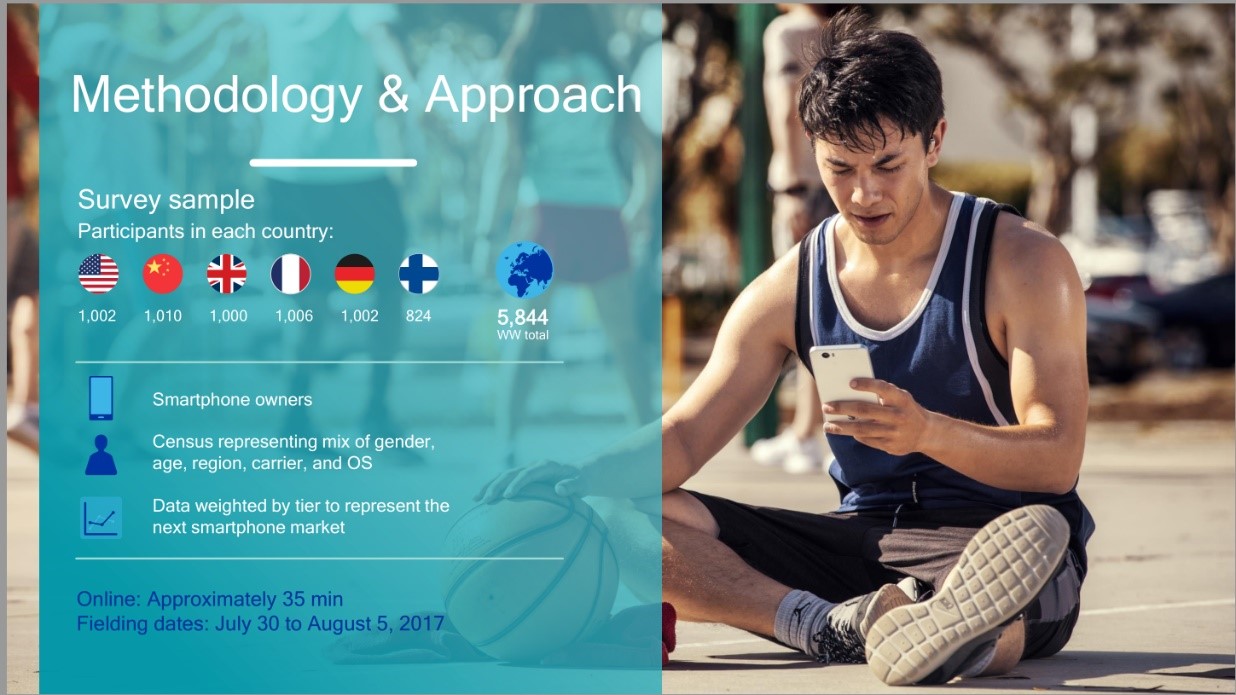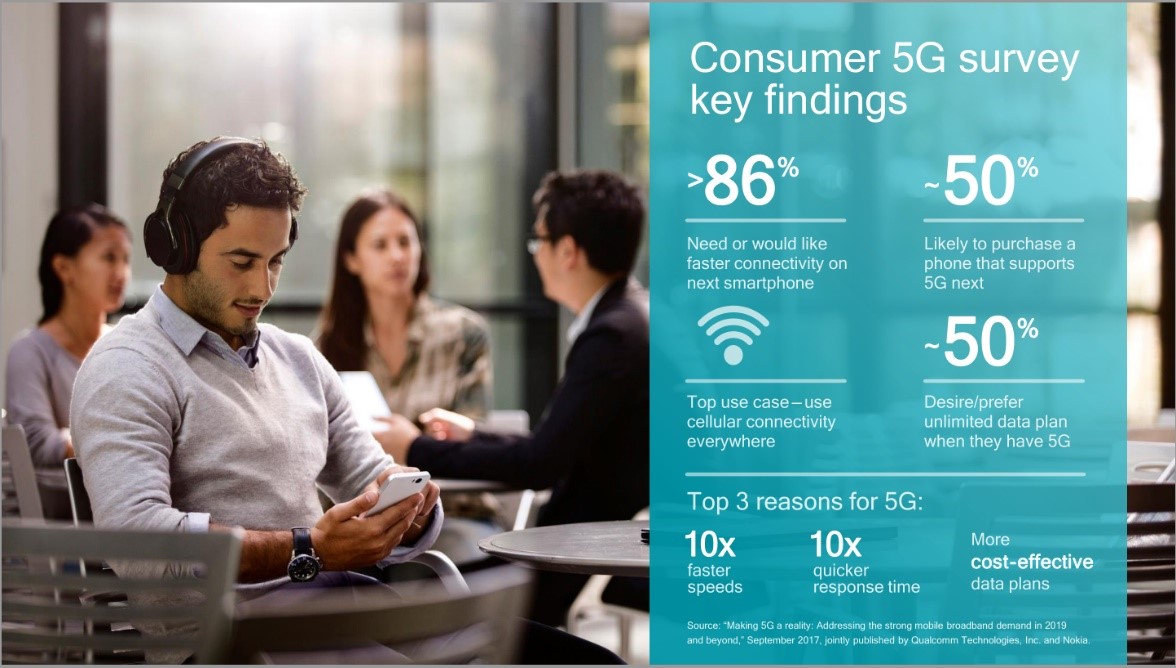5G through the eyes of users. Expectations and concerns

According to representatives of leading mobile operators in Europe and the United States, the first 5G smartphones will be available in 2019, by which time the necessary infrastructure will have been prepared. On the eve of this event, we decided to ask smartphone users why they need 5G and what they expect from a new generation of communication, and also vividly show what other opportunities 5G can offer them.
What do users want?
In order to understand the mood and expectations of future subscribers of 5G networks, we and Nokia Networks conducted a large-scale survey of 5G Consumer Survey . More than 5800 smartphone owners from the USA, China, Great Britain, France, Germany and Finland took part in it.

5G Consumer Survey Survey: Methodology and Approach
')
In the formation of the sample, we took into account the age, gender, use of services of a particular operator. The data collected by country was averaged with certain weights in order to correct the difference in scale and average purchasing power of markets such as Finland and China.
It turned out that the overwhelming majority (86% of respondents) called the speed of downloading and uploading data as a priority when choosing a smartphone. Moreover, over 60% are ready to overpay about $ 50 for a gadget, in which the 5G NR module will be present. In Russia, I suppose, the average buyer will be ready to pay a slightly smaller amount, but, for sure, he will not refuse a significant increase in the speed of his smartphone either.

5G Consumer Survey Survey: Key Findings
And what users do not like?
In the course of the survey, we asked respondents to name a few of the most annoying shortcomings of the cellular communication available today. The first place in this anti-rating (by 48% of references) got the need to connect to unsafe public Wi-Fi networks in order to increase the speed and too low speed of web surfing on the cellular terminal.

Most of the "pains" of the consumer in the field of mobile Internet access are associated with the speed of data transfer on the mobile device and the seamlessness of the connection. AR and VR, about which they like to talk so much in presentations for the consumer market, are far behind
Also, users did not like the slow download speed (31%), the questionable quality of video calls (27%) and the impossibility of fast access to cloud services, as well as difficulties with UHD and 360-degree streaming. Accordingly, respondents cited the main driving factors for the transition to 5G to be a tenfold increase in the data exchange rate (63%) and a tenfold reduction in the characteristic response time (55%) compared to the current networks.
Thus, the survey shows that for ordinary smartphone users, the main attractive characteristics of 5G networks are coverage continuity, increased connection speed and access to tariff plans with a more reasonable cost of data transmission.

What motivates users to switch to 5G
5G: not only speed
When we mention 5G, users often assume that we are talking only about the connection speed. But 5G is a story not only about smartphones, but also about instantly rebuilt autonomous industries (industrial Internet of things), and about the new "smart" human environment (IoT), and about "smart" cars that can communicate with each other and road infrastructure (C-V2X).
In order to show users all the features of 5G, we, in conjunction with The New Yorker, created a series of videos in which, in as simple and accessible language as possible, told how the introduction of 5G will help create new scenarios for the use of wireless technologies. We chose drawn videos, because cartoons and animations are the best way to explain complex and complex phenomena. Illustrator and cartoonist Emily Flake and Qualcomm experts showed how 5G technology can unlock the full potential of virtual reality, the Internet of things and artificial intelligence.
Internet of things
Thanks to 5G and Qualcomm technologies, smart devices will be able to interact with each other, share information and work in the complex. This video shows how some devices on the Internet of Things will be able to give tasks to others using the example of a smart oven and smart watches.
Artificial Intelligence
In the near future, 5G and AI will, among other things, be used to translate texts / speech in real time and to solve many other problems. In this video, Emily Flake showed how we can “speak” in 6499 languages using the Qualcomm Snapdragon mobile platform and built-in smartphones or smart AI column tools.
The virtual reality
Due to the sharp increase in data transfer speed and minimal latency, virtual reality technology will change dramatically. For example, it will be possible to realize virtual reality on the scale of a room that a user can move around (i.e. he will not have to stand in one place, as now). As a result, it will be possible, for example, to conduct VR-broadcasts of events, as in this video.
Source: https://habr.com/ru/post/433652/
All Articles